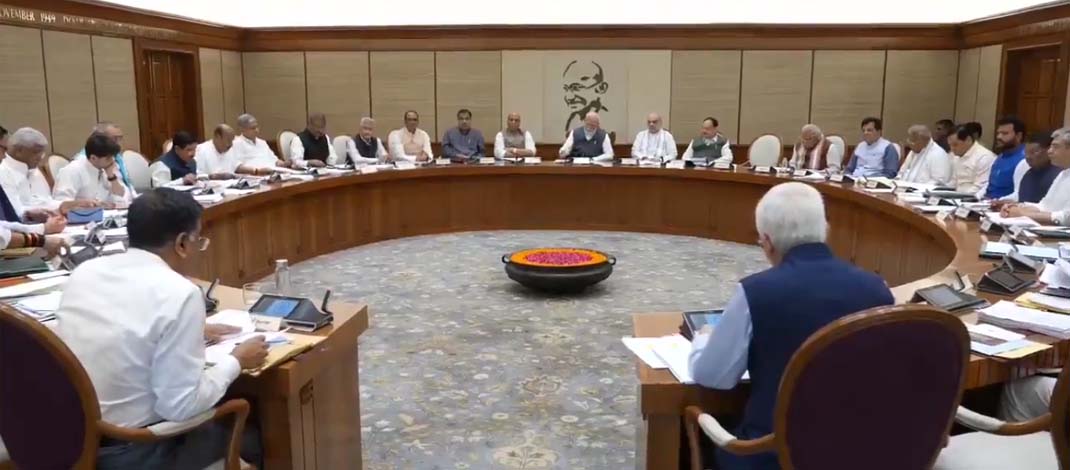- Courses
- GS Full Course 1 Year
- GS Full Course 2 Year
- GS Full Course 3 Year
- GS Full Course Till Selection
- Online Program
- GS Recorded Course
- NCERT (Recorded 500+ Hours)
- Polity Recorded Course
- Geography Recorded Course
- Economy Recorded Course
- AMAC Recorded Course
- Modern India, Post Independence & World History
- Environment Recoded Course
- Governance Recoded Course
- Science & Tech. Recoded Course
- International Relations and Internal Security Recorded Course
- Disaster Management Module Course
- Ethics Recoded Course
- Essay Recoded Course
- Current Affairs Recoded Course
- CSAT
- 5 LAYERED ARJUNA Mentorship
- Public Administration Optional
- ABOUT US
- OUR TOPPERS
- TEST SERIES
- FREE STUDY MATERIAL
- VIDEOS
- CONTACT US
PLACES IN NEWS 24th MARCH 2025
PLACES IN NEWS 24th MARCH 2025
24-03-2025

Gambhiri River
Why in news?
- Rajasthan High Court seeks response on alleged encroachment in Gambhiri river floodplain, impacting water supply to Ghana Bird Sanctuary, Bharatpur.
About Gambhiri River:
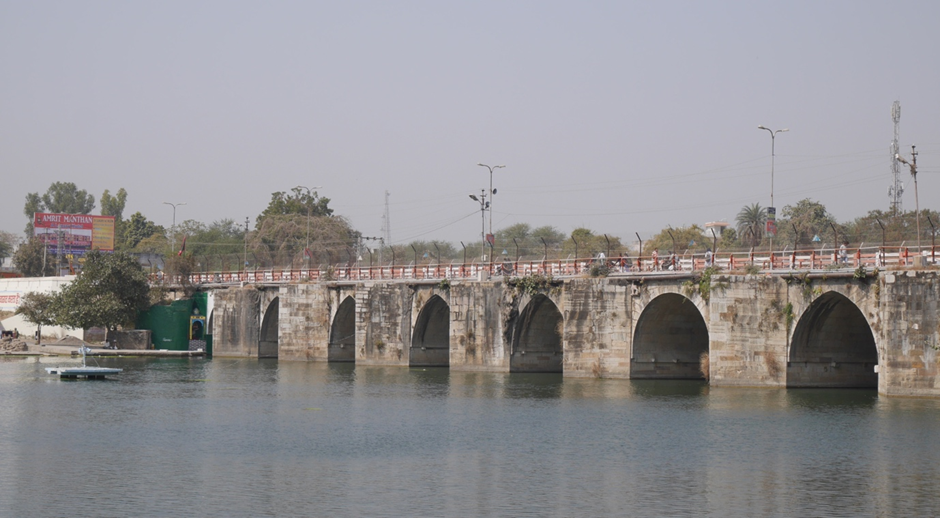
- Gambhir River, also known as the Utangan River, is a significant seasonal river in Rajasthan.
- The river originates in the Aravalli Hills near Hindaun and flows through multiple districts before reaching Uttar Pradesh.
- It primarily flows during the rainy season, making it an ephemeral river for most of the year.
- After confluence with the Parbati River (outside Dholpur District), it becomes perennial.
- It follows a south-to-north course and ultimately merges with the Yamuna River.
- The Gambhir River Basin lies in northeastern Rajasthan, bordered by the Banganga River Basin (north), Banas River Basin (southwest), and Chambal & Parbati Rivers (southeast), with Uttar Pradesh forming its northeastern boundary.
- It supplies water to the Keoladeo National Park, a UNESCO World Heritage Site.
- Total Length: Approximately 288 km.
- Major tributaries: Sesa, Kher, and Parbati Rivers.
Hemavati River
Why in news?
- Two youths recently drowned while swimming in the Hemavati River near Henli village in Sakleshpur.
About Hemavati River:
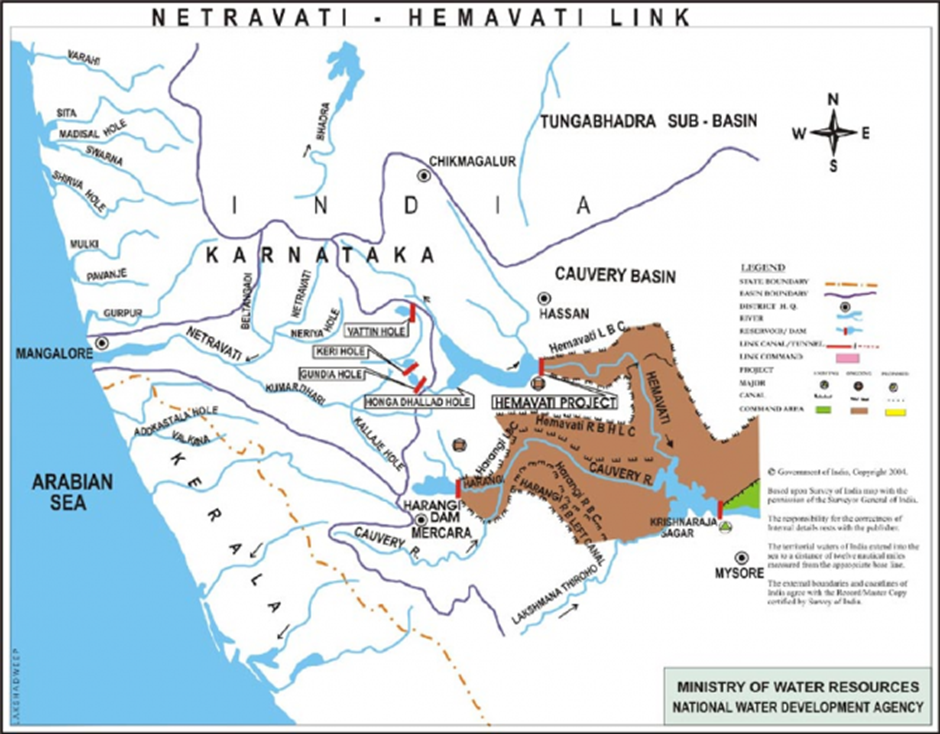
- The Hemavati River originates in the Western Ghats at Javali village, situated at an elevation of 1,230 metres (4,040 ft), located in Mudigere taluk of Chikmagalur District, Karnataka.
- It flows through Mudigere taluk (Chikmagalur District), Hassan District, and Mandya District before merging with the Kaveri River near Krishnarajasagara.
- The river spans approximately 245 km and drains an area of about 5,410 km².
- • The Yagachi River is its chief tributary, joining it in Hassan District.
- The Hemavati Dam (Gorur Dam) was completed in 1979 in Hassan District, downstream from the Yagachi confluence.
- The dam has a live storage capacity of 35.7 TMC and provides irrigation and drinking water to Hassan, Mandya, and Tumkur districts.
- The Shettihalli Rosary Church, built in the 1860s, was submerged due to the dam's construction and is visible only when water levels are low.
Israel-Syria
Why in news?
- Israel conducted airstrikes on two military bases in central Syria, targeting strategic locations.
About Israel-Syria:
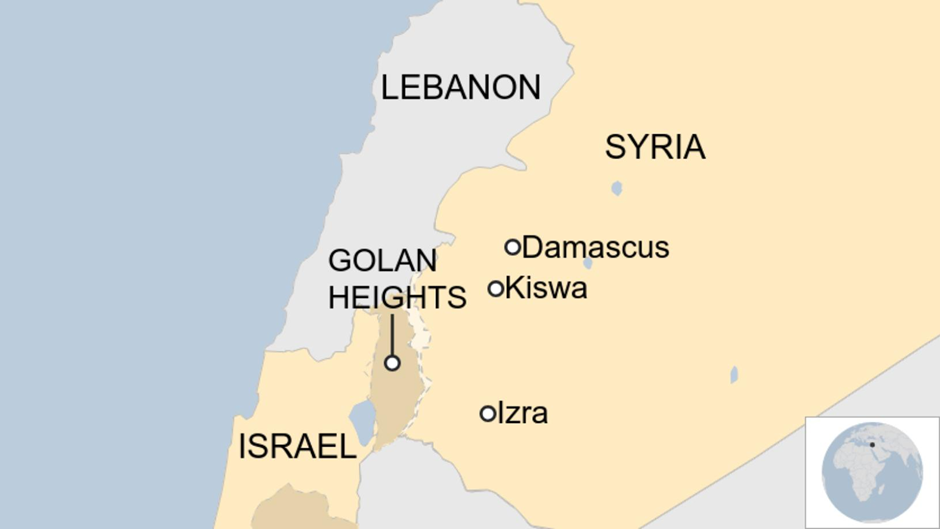
- Historical Context
- The Israel-Syria conflict dates back to the 1948 Arab-Israeli War, when Syria opposed Israel’s creation.
- The two nations fought multiple wars, including the Six-Day War (1967), after which Israel captured the Golan Heights from Syria.
- The Yom Kippur War (1973) saw Syria attempting to reclaim lost territory but was unsuccessful.
- Since then, Syria has supported groups like Hezbollah, while Israel has conducted military operations to counter Syrian threats.
- Recent Reasons for Airstrikes
- Israeli airstrikes on Palmyra and T4 military bases aim to prevent arms from reaching groups hostile to Israel.
- Since December, following the fall of Bashar al-Assad’s regime, Israel has targeted Syrian military sites to limit the new authorities’ capabilities.
- Israeli Prime Minister Benjamin Netanyahu has demanded the demilitarisation of southern Syria, particularly regions south of Damascus.
- Israel also claims to protect the Druze minority, citing recent sectarian tensions in Damascus.
- Syria accuses Israel of destabilising the region through repeated military interventions.
- Conflict Regions in News
- Palmyra & T4 Airbase: Sites of recent Israeli airstrikes targeting strategic military locations.
- Southern Syria & Damascus: Regions where Israel seeks to prevent hostile forces' presence.
- Golan Heights: A long-standing disputed territory between Israel and Syria.
- Druze Communities in Damascus: Israel claims to intervene to protect this minority from sectarian clashes.
Bhadra Wildlife Sanctuary
Why in news?
- The Karnataka Forest Department will ‘soft release’ captured elephants into Bhadra Sanctuary to reduce human-elephant conflict in Hassan, Chikkamagaluru, and Kodagu.
About Bhadra Wildlife Sanctuary:
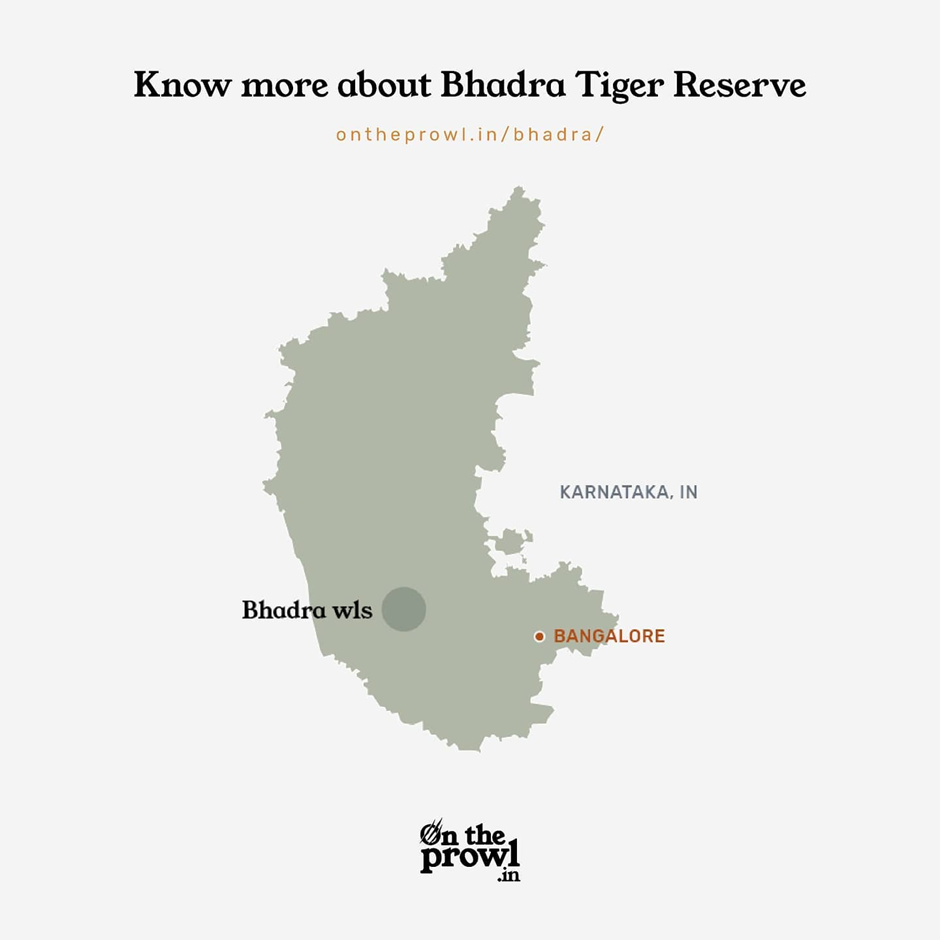
- Location and Geography:
- Bhadra Wildlife Sanctuary, a Project Tiger reserve, is located in Chikkamagaluru district, Karnataka, 23 km south of Bhadravathi and 283 km from Bengaluru.
- The sanctuary covers an area with elevations ranging from 615 m to 1,875 m, with Hebbe Giri as the highest peak.
- It is surrounded by the Mullayanagiri, Hebbegiri, Gangegiri, and Bababudangiri hills, forming part of the Western Ghats.
- The Bhadra River, along with its tributaries, flows through the sanctuary, and the Bhadra Reservoir forms its western boundary.
- The region experiences a temperature range of 10°C to 35°C, with annual rainfall varying between 1,200 mm and 2,600 mm.
- Flora and Fauna:
- The sanctuary is a biodiversity hotspot, consisting of wet deciduous, moist deciduous, and evergreen forests, along with shola forests and grasslands.
- Over 120 plant species are found, including teak, rosewood, Indian laurel, fig trees, bamboo, and several medicinal plants.
- It is home to 33 tigers, along with elephants, leopards, gaurs, sloth bears, wild boars, sambar deer, and langurs.
- Rare species like the black leopard, Malabar giant squirrel, flying squirrel, and pangolin also inhabit the area.
- Small carnivores, including leopard cats, otters, and mongooses, contribute to the sanctuary’s rich ecosystem.
- Reason Behind Human-Animal Conflict:
- Encroachment and deforestation near the sanctuary have reduced wildlife habitats, leading to animals straying into human settlements.
- Elephants, leopards, and wild boars frequently raid crops, damaging agriculture and causing financial losses to local farmers.
- Occasional tiger and leopard attacks on livestock increase tensions between wildlife conservationists and villagers.
- Villages near the sanctuary, like Jagara and Sirivase, face frequent human-wildlife interactions due to their proximity to the forest.
- Steps Taken to Prevent Human-Animal Conflict:
- Relocation of villages: Bhadra was the first tiger reserve in India to complete a successful village relocation programme in 2002, moving 26 villages to safer locations.
- Elephant management: Captured elephants are being soft-released into the sanctuary to minimise conflicts in Hassan, Chikkamagaluru, and Kodagu.
- Compensation schemes: Farmers affected by wildlife damage receive financial aid from the Karnataka Forest Department.
- Eco-development initiatives: Awareness programmes educate locals on coexisting with wildlife and conservation efforts.
- Fencing and barriers: Solar-powered fences and elephant-proof trenches have been set up to protect farmlands.
Atacama Desert
Why in news?
- Increasing light pollution in Chile’s Atacama Desert threatens the visibility and efficiency of its world-class astronomical telescopes and observatories.
About Atacama Desert:
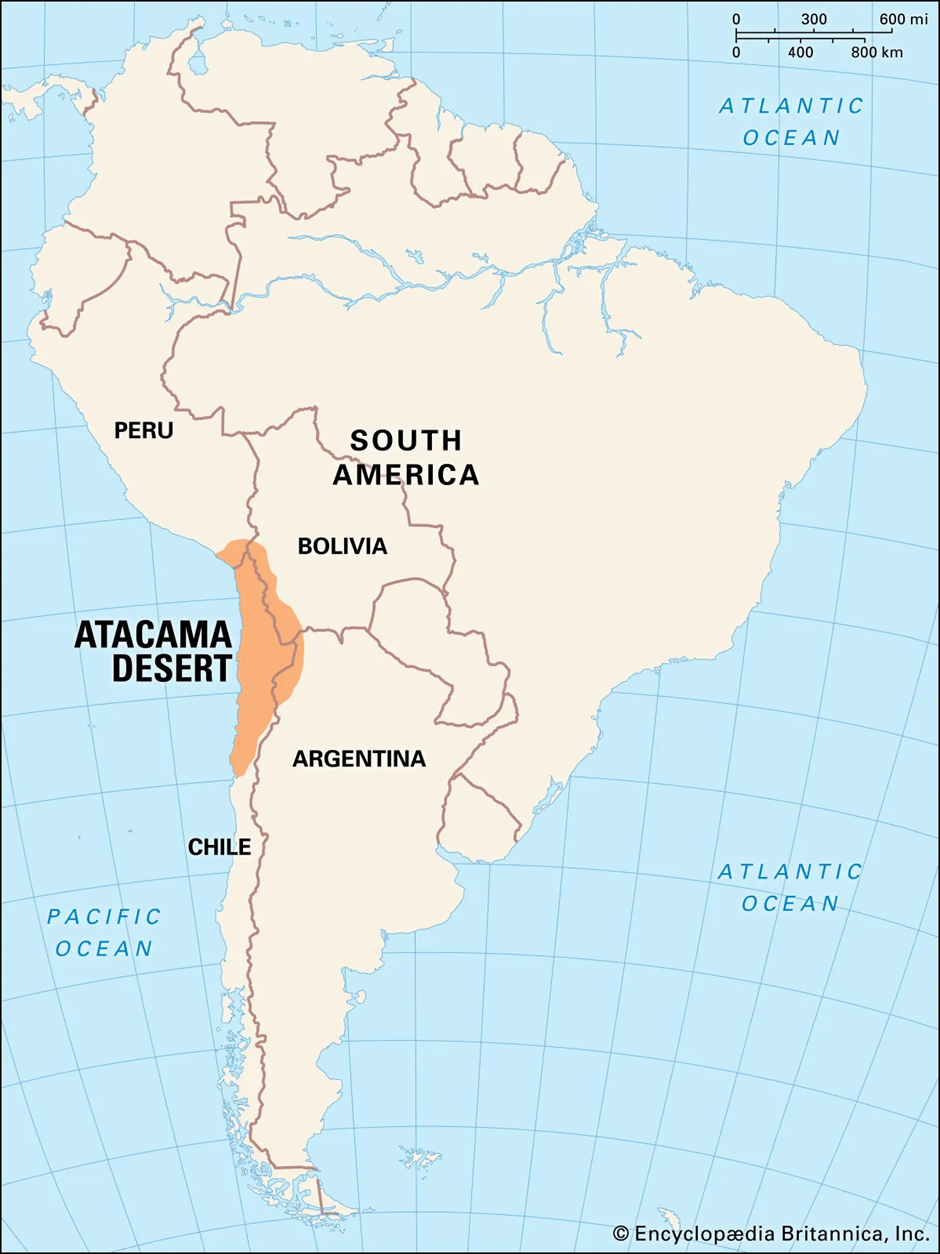
- Location and Geography:
- The Atacama Desert is located in northern Chile, stretching over 1,600 km along the Pacific coast.
- It is one of the driest places on Earth, with annual rainfall averaging less than 15 mm in some areas.
- The desert is bordered by the Pacific Ocean to the west and the Andes Mountains to the east, creating a rain shadow effect that prevents moisture from reaching the region.
- The terrain consists of salt flats, sand dunes, volcanic peaks, and rocky plateaus, making it a harsh but unique landscape.
- San Pedro de Atacama is a key town within the desert, serving as a base for researchers and tourists.
- Formation:
- The extreme aridity of the Atacama Desert is due to the Humboldt Current and the Andean rain shadow effect.
- The Humboldt Current, a cold oceanic current, reduces evaporation and prevents cloud formation, limiting precipitation.
- The Andes Mountains block moist air from the Amazon Basin, reinforcing the desert's dry climate.
- Geological studies suggest that the Atacama has been arid for millions of years, making it one of the oldest deserts in the world.
- Why Telescopes Are Located in the Region:
- The Atacama Desert is home to world-class astronomical observatories, including the Atacama Large Millimetre Array (ALMA), Paranal Observatory, and La Silla Observatory.
- The region has exceptional atmospheric conditions, with low humidity and minimal cloud cover, allowing for clear night skies throughout the year.
- The high altitude of the desert, averaging 2,400 metres above sea level, reduces air turbulence, improving astronomical observations.
- Minimal light pollution historically made it one of the best places on Earth for deep-space observations.
- These conditions allow astronomers to study exoplanets, galaxies, and cosmic radiation with unparalleled clarity.
- Reason Behind Increasing Light Pollution:
- Urban expansion: Growing cities like Antofagasta and Calama are leading to increased artificial lighting.
- Mining activities: The Atacama is rich in copper and lithium, and the lights from mining operations contribute to sky brightness.
- Tourism growth: More visitors mean more infrastructure and lighting, impacting the darkness required for astronomical research.
- Lack of strict regulations: Although some efforts exist to control artificial light, enforcement is weak, allowing pollution to increase.
Chilika Lake
Why in news?
- Tourists and researchers observe Irrawaddy dolphins in Chilika Lake, India, Asia’s largest saltwater lagoon, facing conservation challenges.
About Chilika Lake:
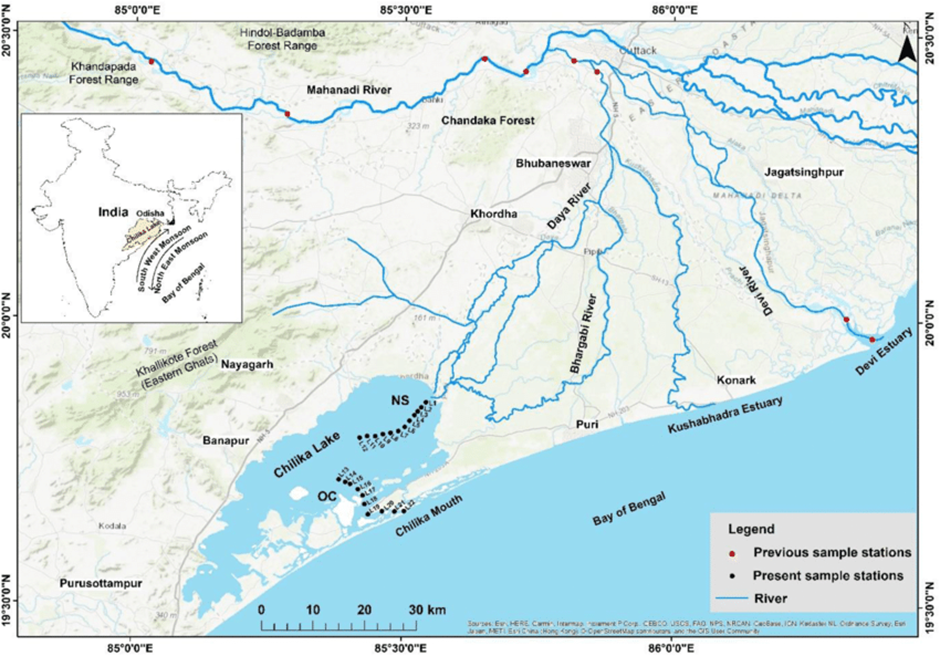
- Location:
- Chilika Lake, the largest coastal lagoon in India and Asia’s biggest saltwater lake, is located in the state of Odisha.
- It spans over 1,100 sq. km across Puri, Khurda, and Ganjam districts and connects to the Bay of Bengal through a narrow sea mouth.
- Ecological Significance:
-
- Chilika is a Ramsar Site, recognised for its rich biodiversity and role as a critical habitat for migratory birds along the East Asian-Australasian Flyway.
- It serves as a breeding ground for fish species and sustains the livelihoods of local fishing communities.
-
- Other Key Features:
- It is home to over 225 species of fish and supports a large fishing industry.
- The Nalabana Bird Sanctuary, within the lake, attracts thousands of migratory birds, including flamingos, pelicans, and herons.
- The lake hosts one of the largest populations of Irrawaddy dolphins, a key attraction for ecotourism.
- Seasonal changes and hydrological variations influence its salinity levels, affecting its diverse aquatic ecosystem.
Irrawaddy Dolphins
- Habitat and Distribution: Irrawaddy dolphins are found in coastal waters of South and Southeast Asia and inhabit three major rivers—the Irrawaddy (Myanmar), Mahakam (Indonesia), and Mekong (China).
- Conservation Status: They are classified as ‘Endangered’ by the IUCN Red List, with a global population of fewer than 7,500 individuals.
- Population in Chilika: The highest single-lagoon population of Irrawaddy dolphins is found in Chilika Lake, making it a crucial conservation site.
- Threats: Habitat degradation, accidental entanglement in fishing nets, and increasing human activities pose significant threats to their survival.
|
UPSC CSE PYQs Q1. The area known as ‘Golan Heights’ sometimes appears in the news in the context of the events related to (2015)
Answer: Option B Q3. Yom Kippur War was fought between which sides/ countries? (2008)
Answer: Option C |
|
Also Read |
|
| FREE NIOS Books | |



